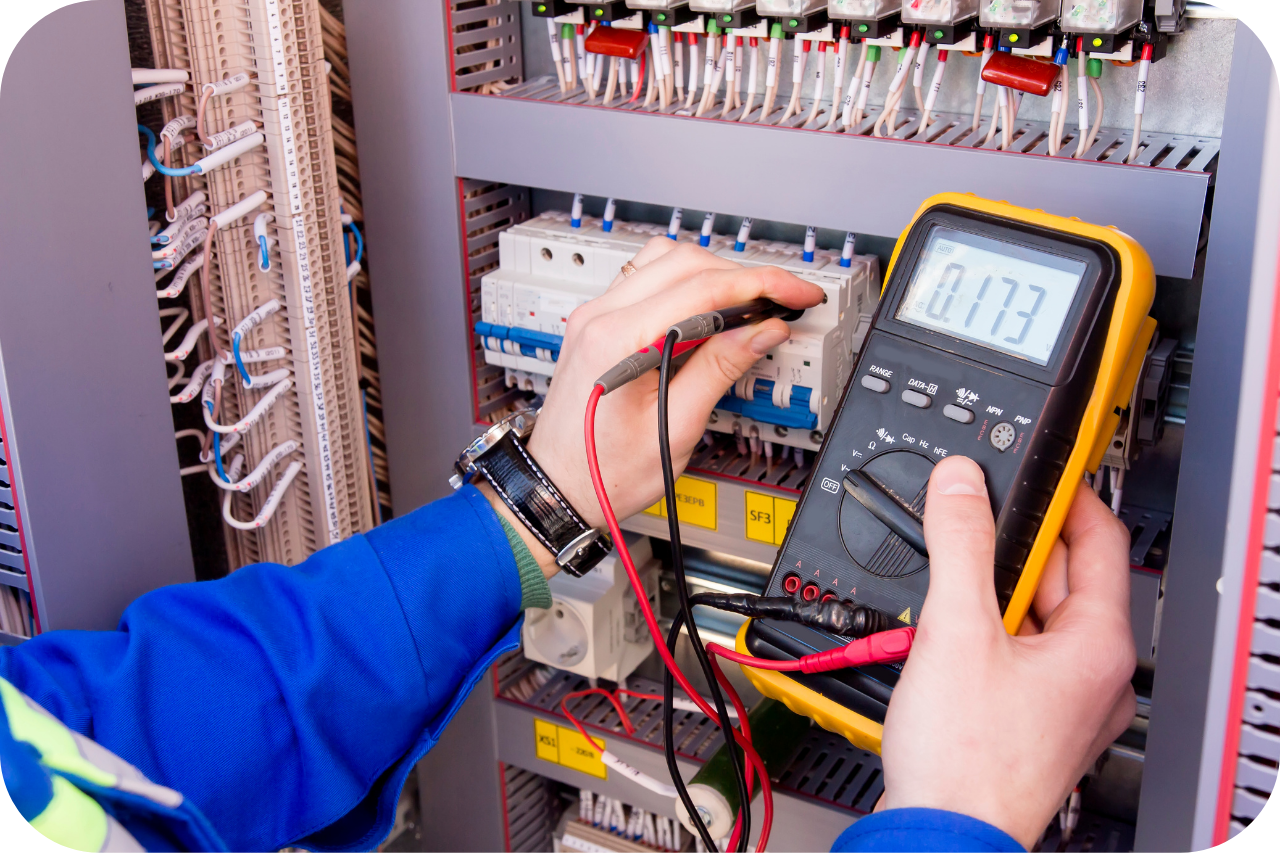Roar Solutions for Dummies
Roar Solutions for Dummies
Blog Article
About Roar Solutions
Table of ContentsThe 6-Minute Rule for Roar SolutionsHow Roar Solutions can Save You Time, Stress, and Money.Roar Solutions Things To Know Before You Buy
In such an atmosphere a fire or explosion is possible when 3 standard problems are satisfied. This is usually described as the "dangerous area" or "burning" triangular. In order to shield installments from a possible surge a technique of evaluating and identifying a potentially unsafe location is needed. The purpose of this is to make sure the appropriate choice and installation of devices to eventually protect against a surge and to make sure safety of life.
(https://www.startus.cc/company/roar-solutions)
No equipment must be set up where the surface temperature of the equipment is more than the ignition temperature level of the offered threat. Below are some typical dirt harmful and their minimum ignition temperature. Coal Dust 380C 225C Polythene 420C (thaws) Methyl Cellulose 420C 320C Starch 460C 435C Flour 490C 340C Sugar 490C 460C Grain Dust 510C 300C Phenolic Material 530C > 450C Aluminium 590C > 450C PVC 700C > 450C Soot 810C 570C The probability of the risk existing in a concentration high enough to cause an ignition will certainly differ from place to place.
In order to categorize this risk an installation is divided right into locations of threat relying on the amount of time the harmful is present. These locations are referred to as Areas. For gases and vapours and dusts and fibers there are three zones. Area 0 Zone 20 A harmful environment is highly most likely to be existing and may exist for long durations of time (> 1000 hours per year) or even continually Area 1 Zone 21 A hazardous atmosphere is possible however unlikely to be existing for extended periods of time (> 10 450 C [842 F] A classification of T6 implies the minimal ignition temperature level is > 85 C [185 F] Dangerous location electrical equipment possibly designed for usage in higher ambient temperature levels. This would showed on the rating plate e.g. EExe II C T3 Ta + 60C( This suggests at 60C ambient T3 will certainly not be exceeded) T1 T1, T2, T3, T4, T5, T6 T2 T2, T3, T4, T5, T6 T3 T3, T4, T5, T6 T4 T4, T5, T6 T5 T5, T6 T6 T6 A T Course rating of T1 means the optimum surface temperature level produced by the instrument at 40 C is 450 C. Thinking the linked T Class and Temperature score for the tools are appropriate for the location, you can always utilize a tool with an extra stringent Department rating than required for the location. There isn't a clear solution to this inquiry regrettably. It actually does depend upon the kind of devices and what repair services need to be executed. Equipment with details test treatments that can not be performed in the area in order to achieve/maintain third event rating. Have to come back to the manufacturing facility if it is prior to the tools's solution. Area Repair Service By Authorised Employee: Difficult screening may not be needed nonetheless specific treatments might need to be complied with in order for the tools to maintain its 3rd party ranking. Authorised personnel have to be utilized to carry out the work properly Fixing need to be a like for like replacement. New part have to be considered as a straight replacement calling for no unique screening of the equipment after the repair service is total. Each item of devices with a harmful score must be evaluated independently. These are described at a high level below, but also for even more in-depth info, please refer straight to the guidelines.
Roar Solutions - Questions
The tools register is a comprehensive data source of equipment documents that includes a minimum collection of areas to determine each item's place, technological criteria, Ex category, age, and ecological information. This details is important for monitoring and handling the tools efficiently within harmful locations. On the other hand, for routine or RBI tasting evaluations, the quality will be a mix of In-depth and Close examinations. The ratio of In-depth to Close assessments will certainly be established by the Equipment Risk, which is analyzed based on ignition risk (the possibility of a resource of ignition versus the probability of a flammable ambience )and the hazardous area classification
( Area 0, 1, or 2). This variation will likewise affect the resourcing demands for job prep work. As soon as Great deals are defined, you can create tasting strategies based upon the example size of each Lot, which refers to the number of random devices things to be evaluated. To figure out the called for example dimension, 2 aspects need to be assessed: the dimension of the Great deal and the group of examination, which suggests the level of effort that need to be used( lowered, normal, or boosted )to the examination of the Great deal. By incorporating the group of evaluation with the Great deal size, you can after that establish the ideal being rejected requirements for a sample, suggesting the allowed variety of malfunctioning things found within that sample. For more information on this procedure, please describe the Energy Institute Standards. The IEC 60079 conventional recommends that the maximum period in between evaluations ought to not go beyond three years. EEHA evaluations will certainly also be conducted beyond RBI projects as component of arranged upkeep and devices overhauls or repair services. These examinations can be attributed toward the RBI example sizes within the affected Whole lots. EEHA assessments are carried out to determine faults in electrical equipment. A heavy racking up system is essential, as a solitary tool may have numerous mistakes, each with varying degrees of ignition threat. If the mixed score of both evaluations is less than two times the fault rating, the Great deal is deemed appropriate. If the Lot is still taken into consideration undesirable, it needs to go through a full evaluation or reason, which may set off stricter examination procedures. Accepted Great deal: The sources of any faults are determined. If a common failing mode is found, extra tools may need evaluation and repair. Mistakes are classified by severity( Security, Honesty, House cleaning ), ensuring that urgent concerns are assessed and attended to promptly to reduce any kind of effect on safety and security or operations. The EEHA data source should track and videotape the lifecycle of faults in addition to the corrective activities taken. Executing a robust Risk-Based Examination( RBI )method is essential for guaranteeing conformity and security in managing Electrical Devices in Hazardous Areas( EEHA) (Roar Solutions). Automated Mistake Scoring and Lifecycle Management: Effortlessly take care of faults and track their lifecycle to improve examination accuracy. The introduction of this assistance for risk-based inspection further reinforces Inspectivity's placement as a best-in-class service for regulatory conformity, in addition to for any asset-centric examination usage situation. If you have an interest in discovering more, we welcome you to request a presentation and find how our solution can change your EEHA monitoring procedures.
The Main Principles Of Roar Solutions

In terms of explosive threat, a hazardous location is an atmosphere in which an explosive environment is present (or may be expected to be existing) in amounts that need special preventative measures for the construction, installation and use tools. electrical refresher course. In this post we check out the difficulties dealt with in the workplace, the threat control steps, and the required proficiencies to work safely
It is an effect of modern-day life that we produce, save or deal with an array of gases or liquids that are deemed flammable, and a variety of dirts that are considered flammable. These substances can, in particular conditions, develop eruptive environments and these can have significant and unfortunate repercussions. Many of us are familiar with the fire triangular remove any kind of one of the 3 components and the fire can not occur, yet what does this mean in the context of dangerous locations? When breaking this down right into its simplest terms it is basically: a combination of a particular quantity of release or leak of a specific material or material, mixing with ambient oxygen, and the existence of a resource of ignition.
In most circumstances, we can do little regarding the degrees of oxygen airborne, yet we can have substantial influence on resources of ignition, for instance electric devices. Hazardous locations are recorded on the unsafe location category illustration and are recognized on-site by the triangular "EX-SPOUSE" sign. Here, among various other key information, zones are split into three types relying on the hazard, the chance and period that an explosive atmosphere will exist; Area 0 or 20 is regarded the most dangerous and Area 2 or 22 is considered the least.
Report this page